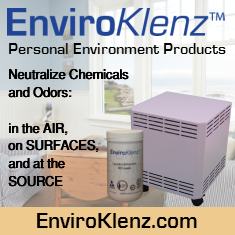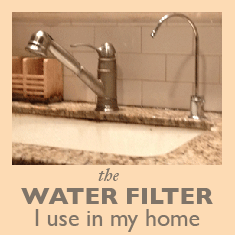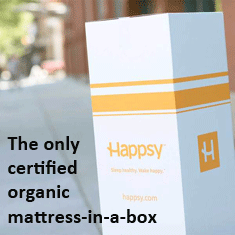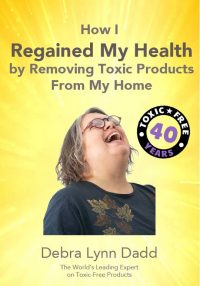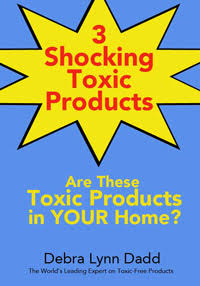
Water | Swimming Pools
Chloramine Shower Filters
Question from Mary
There was an earlier post about Aquasmart Tecnologies having a shower filter that filters out chloramines. I called the company and they make the Kdf filters that they sell on their website they have two types of shower filters, the Kdf 55 which filters out chlorine and they have a new filter the KDF 85. The Kdf media exchanges electrons with contaminants; removing 95% of chlorine, most heavy metals and an average chloramines reduction of 85 % for 10, 000 gallons at a flow rate of 2.5 g.p.m. I got this information off there web sight, but when I talked to a representative of the company she assured me the filter removed chloramines and explained how.
I have used their filter for almost a year and noticed a difference. A friend used our shower and said his skin wasn’t as dry and itchy as when he showers at home.
Debra’s Answer
Clothes Dryer
Question from Maya
Hi Debra. WE never had a dryer before and dried everything on the line. We are moving soon and want to buy a dryer. Do you have any advice. I have been reading a lot on all the problems with front loading washers. Are there any problems with dryers? Which gass dryers are better or you recommend? Thanks, Maya.
Debra’s Answer
I haven’t bought a dryer in years, and haven’t reserched them lately.
I would say look for one that is energy-efficient, but the amount of energy used is so similar between models that Energy Star doesn’t rate them.
So, readers, which clothes dryers do you like or dislike and why?
Whole milk vs. fat free/skim
Question from MLS
I heard recently that IF we are going to drink cow’s milk, it is better to drink whole, despite the higher fat, as it is ‘less processed’ than fat free. Is there really much processing between the whole and fat free stage? Or is most the harmful processing done at the pasturization level?
Also, I heard that adding straight colostrum (which you CAN buy in Oregon) will help add back some of what was lost during pasturization.
Any thoughts???
Debra’s Answer
It’s not the processing itself that is harmful, but the end result.
The reason to drink full fat instead of fat-free milk is two-fold: the fat contains valuable nutrients, and it’s important to eat the whole food as nature intended. When we eat foods from which parts have been removed, we miss vital pieces.
Pasturization destroys enzymes that aid in digestion as well as some vitamins.
Adding colostrum will help add back some of what was lost in pasturization, but it’s better to drink the whole milk in it’s original form rather than piece together parts.
Back in the days when milk was sold whole and raw, it was considered a health food and used recommended by doctors.
Plastic Outgassing Of Microwave Oven
Question from Patricia Hetzler
My husband recently bought a new microwave. The only plastic parts are the door. It has a strong plastic smell when it heats up that gives me a headache. What can I do to speed up the outgassing?And no, my husband can’t live without his microwave, so giving it up isnot a possibility.
Thanks
Pat
Debra’s Answer
Heat speeds the outgassing of plastic.
But I can’t post this without commenting that you and your husband would be much better off to not eat microwaved food. See if you can wean him from it by giving him foods cooked on the stove or in the oven, or raw.
Toxic contaminants in wood?
Question from Cheryl
Hello,
I noticed that you prefer wooden cooking utensils, but I was wondering, since wood is porous and would thus absorb any toxins it might have been exposed to in manufacture, how can we be reasonably sure they are free of toxins? Most likely, they will be made in China, is that okay in terms of toxicity? I hear a lot about wood conatining all sorts of toxins to the extent that we have held off buying a new dresser because of the chemically treated wood. What do you think, Debra and everyone? Thanks for all your help on so many topics. This site is a precious resource!
Cheryl
Debra’s Answer
I’m going to take your questions one at a time.
I prefer wooden cooking utensils because wood is a renewable resource, and they don’t scratch.
Yes, wood is porous and does thus absorbs any toxins it might have been exposed to in manufacture–IF it has been exposed. Wooden cooking utensils are intended for use with food and need to be nontoxic.
I’m not sure most likely wooden utensils are made in China. I just bought a set of wooden tongs at Williams-Sonoma that were handmade in America. Often I buy my wood utensils from woodworkers at crafts fairs, or at high-end cooking stores like Williams-Sonoma or Sur La Table. Some cheap wooden utensils may be made in China, but not these. I’ve never had a problem with fumes outgassing from a wooden utensil, or being made ill by eating food prepared with wooden utensils. Toxic chemicals from wooden utensils has just never been an issue in my experience.
Some wood IS treated with toxic chemicals for very specific purposes, such as pressure-treated wood to be used outdoors. Some furniture made from wood contains toxic chemicals if it is not solid wood, but is plywood or particleboard. I’ve purchased many pieces of solid wood furniture and never had a problem with toxic chemicals in the wood.
Some woods, such as pine and cedar, have resins that some people are sensitive to. But otherwise, wood itself isn’t toxic.
Non toxic mugs
Question from Cheryl
Hello Debra and all,
Is it safe to assume that any mugs made in the United States and claiming to be lead and cadmimum free are non toxic? If I have been told that the coloring they use on their pottery is colored with “highfired stoneware glazes, all nontoxic” or that the color pigments in glazes are made of metal oxides embedded in zirconium crystals, which makes them non-soluble and non-toxic. (Yellow for example contains Vanadium (one of 26 elements found in most living organisms) and blue contains Cobalt (the basis of vitamin B12), does this seem safe? Ah, even the morning coffee or tea has become an issue! Thanks for any insight and your time.
Debra’s Answer
I think that it’s important to consider the source of this information about the finish. If you are speaking with the potter or someone who works for the potter, then I would consider the information reliable. If this is being said by a clerk in a retail store, I wouldn’t believe it for a minute. They often don’t know the correct information. And even customer service at a large manufacturer may not know.
In today’s market, it’s always best to check any ceramic ware with a LeadCheck kit. They are only $5 at any Home Depot.
EVA foam
Question from Jennifer
Dear Debra,
We have just received a toy made from EVA foam (LDPE) Ethylene Vinyl Acetate copolymer which is, I believe, #4 plastic. It is my impression that it is a relatively safe plastic. This is a bath toy so a water proof nature is important. I’d rather keep the toy to avoid hurt feelings but I wonder how safe it is for general handling at bathtime?
I can’t find anything about ill health effects online in a general search.
Thanks for any input.
Jennifer
Debra’s Answer
I couldn’t find any health effects of EVA by looking on MSDS sheets for various products. One was a mouth guard. So if it isn’t outgassing some horrible smell, go ahead and use it.
ABS plastic toy
Question from Jennifer
Dear Debra,
We have been sent a really great ABS plastic toy. While not a big fan of plastic toys, this one is really cool. It’s called ShapeScapeS and I’d like to keep it–as long as it is a safer plastic. I’ve done research which tells me that ABS is an alternative to PVC but I don’t see anything to indicate it as a health hazard for toys. Do you know anything about this plastic for use as a toy involving lots of handling?
Thanks!
Jennifer
Debra’s Answer
ABS stands for Acrylonitrile butadiene styrene. It is made by polymerizing styrene and acrylonitrile in the presence of polybutadiene–15 to 35% acrylonitrile, 5 to 30% butadiene and 40 to 60% styrene. It can be recycled.
Acrylonitrile is a synthetic monomer produced from propylene (from petroleum, natural gas or coal) and ammonia.
Butadiene is a petroleum hydrocarbon obtained from butane gas.
Styrene is commercially obtained from benzene and ethylene from coal.
The MSDS for ABS plastic pipe gives no health effects but warns that if it is burned, the combustion by-products are toxic. It lists acrylonitrile and styrene as hazardous ingredients, but they are present in very small amounts. Since ABS can have varying amounts of each ingredient, the safety of your toy may not be the same as these pipes.
I can’t say with certainty how safe or harmful your toy may be. As a rule, I recommend toys made from natural materials over plastics to be on the safe side. There are many natural toys available from websites listed on the Toy page of Debra’s List.
Bone china
Question from Julie Burns
Hi Debra,
I wonder about getting an English bone china teapot – are they safe to drink from and are their any environmental issues with their production? Thanks!
Debra’s Answer
“China” is a common name for porcelain, an ancient ceramic material perfected by the Chinese (thus the name “china). Examples of porcelain date back to the 7th century.
There are three types of porcelain: hard paste, soft paste and bone china.
Hard paste porcelain is made from kaolin and petuntse.
These are fired at high temperatures, with or without a glaze, and produce a hard, translucent porcelain.
Soft paste porcelain contains the kaolin and petuntse of hard paste plus frit.
The frit in the mixture liquefies and turns to glass, which fuses to the porcelain. Soft paste is not as strong as hard paste porcelain.
Organic Houseplants
Question from Katrina
Hello! We just moved into a new house (not new per se, but new for us) and had our first baby this year. We try to live as “green” as we can. I’m looking to fill my house with plants but cannot seem to find “organic” houseplants anywhere in stores or online. Or even organic plant seeds. I figure organic houseplants are the best choice for a nontoxic environment. Do you think it necessary to buy organic houseplants? All I can seem to find are organic seeds for garden plants such as fruits, vegetables, and herbs. Any suggestions or referrals would be appreciated. Thank you!
Debra’s Answer
Well, I have to say, this is a “blind spot.” I never thought about it because I’ve never encountered a house plant that I thought had a toxic odor. I just bought a regular house plant at Home Depot a few days ago and put it in my bedroom, and no problems at all.
However, of course, if chemicals are used to grow houseplants, it would be better all around to have them be organically grown.
I couldn’t find any information on how houseplants are commercially grown (does anybody know?), but here is an article about how to grow houseplants at home without pesticdes: .

